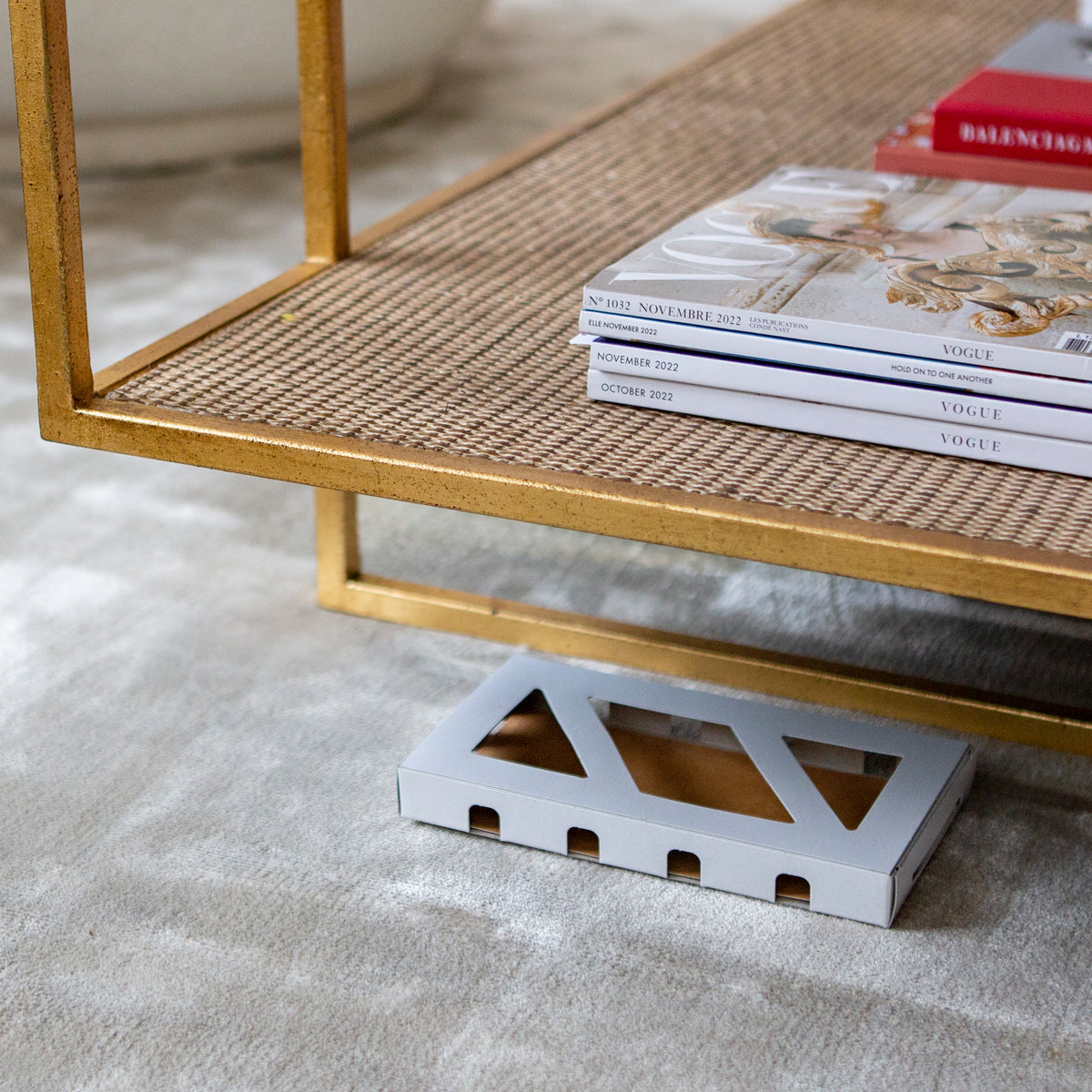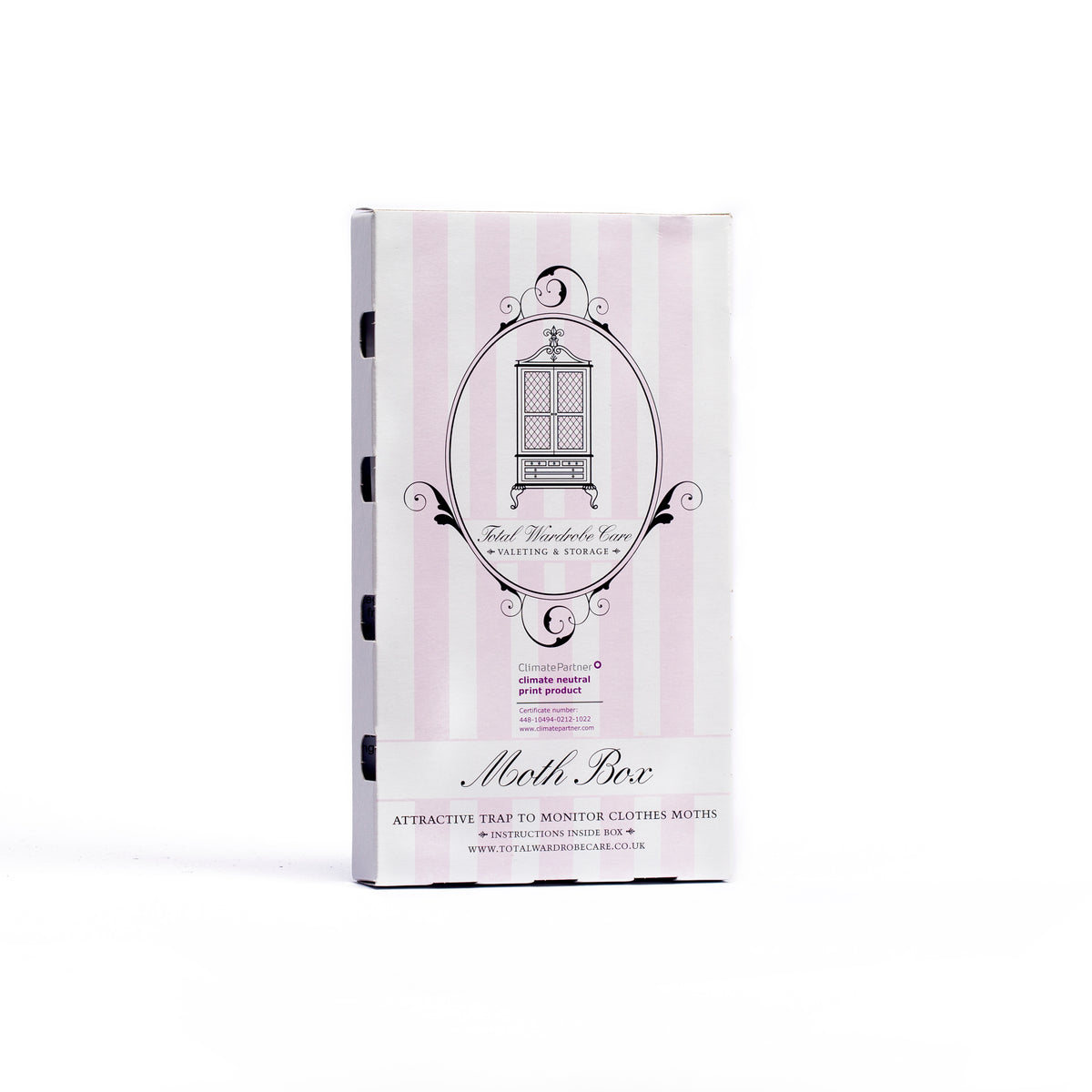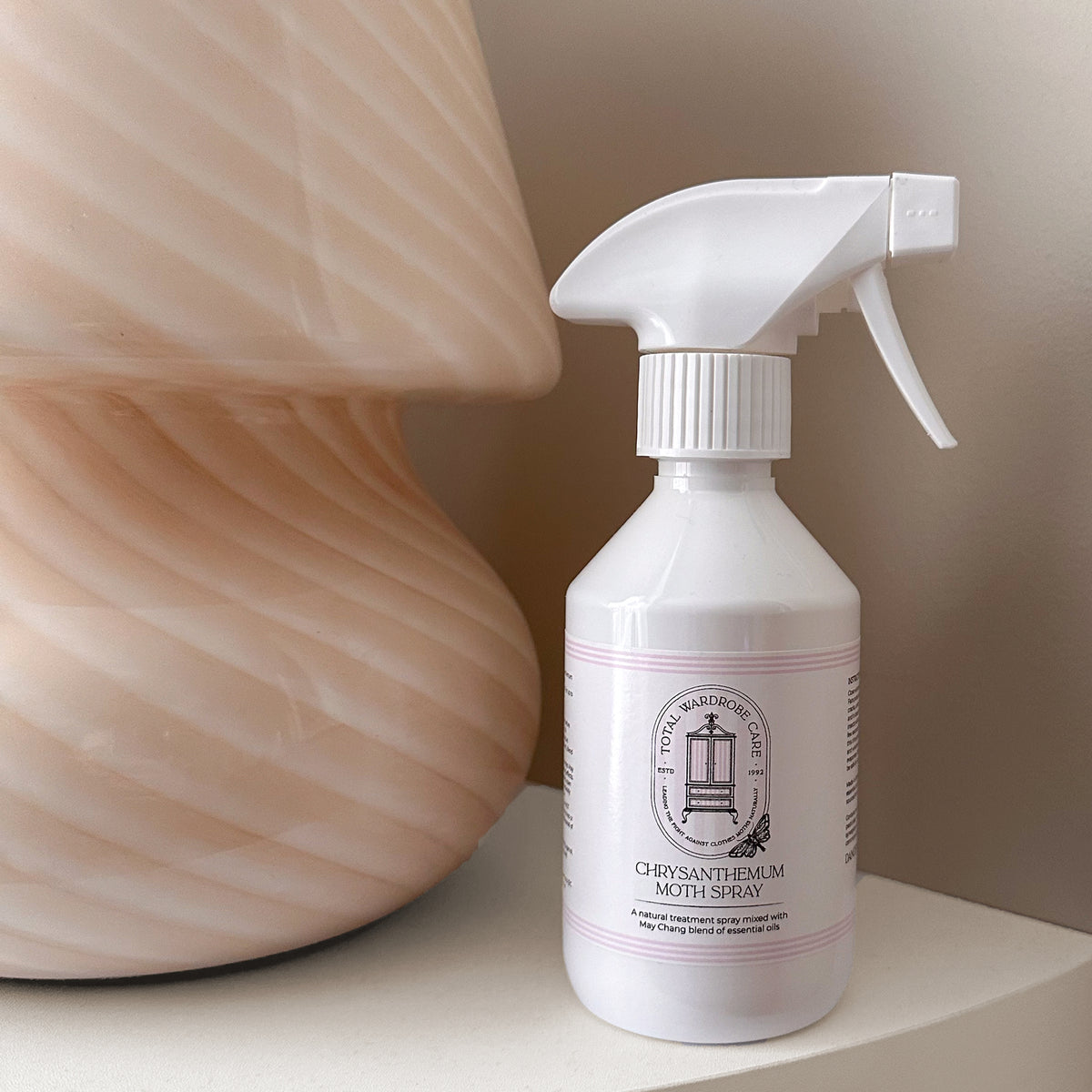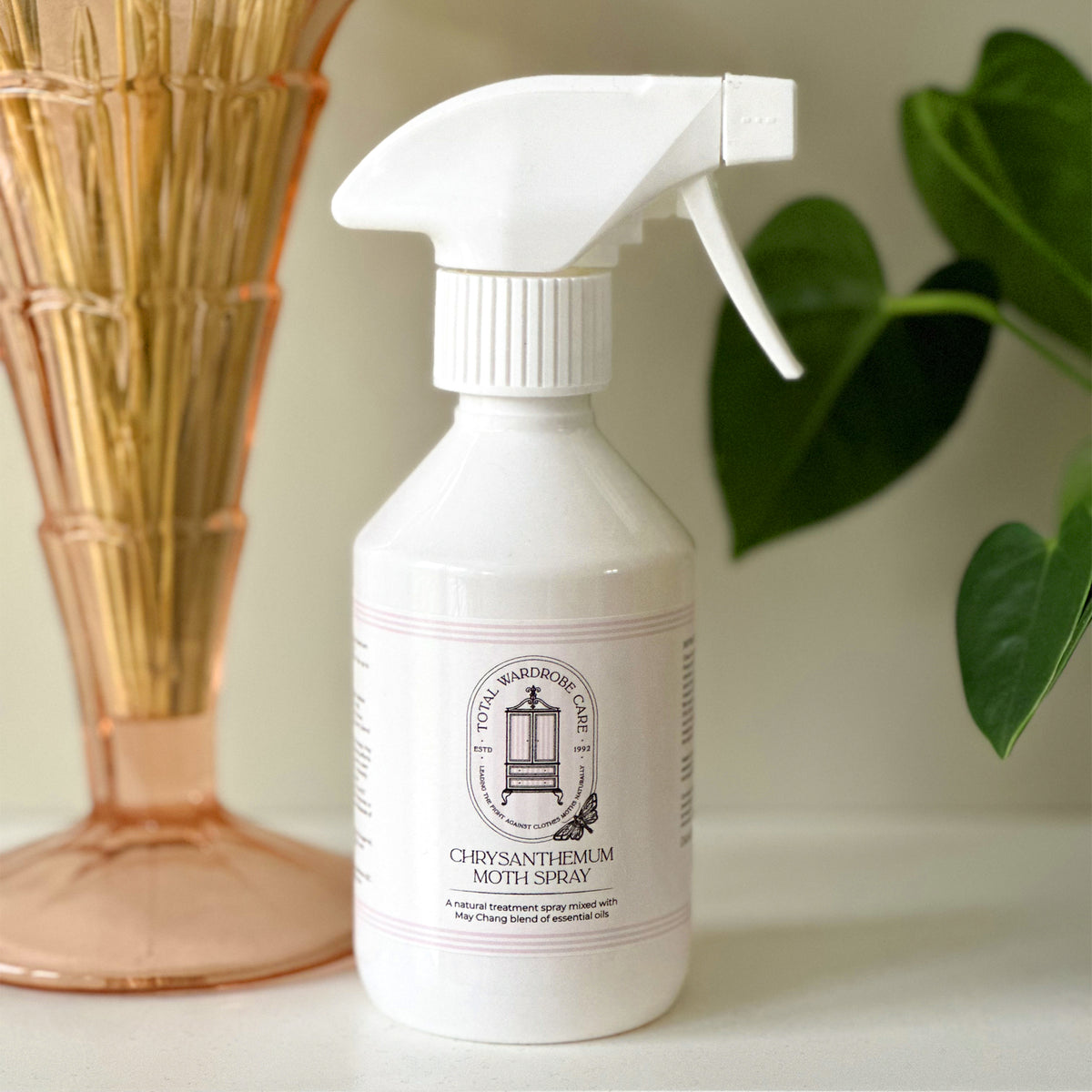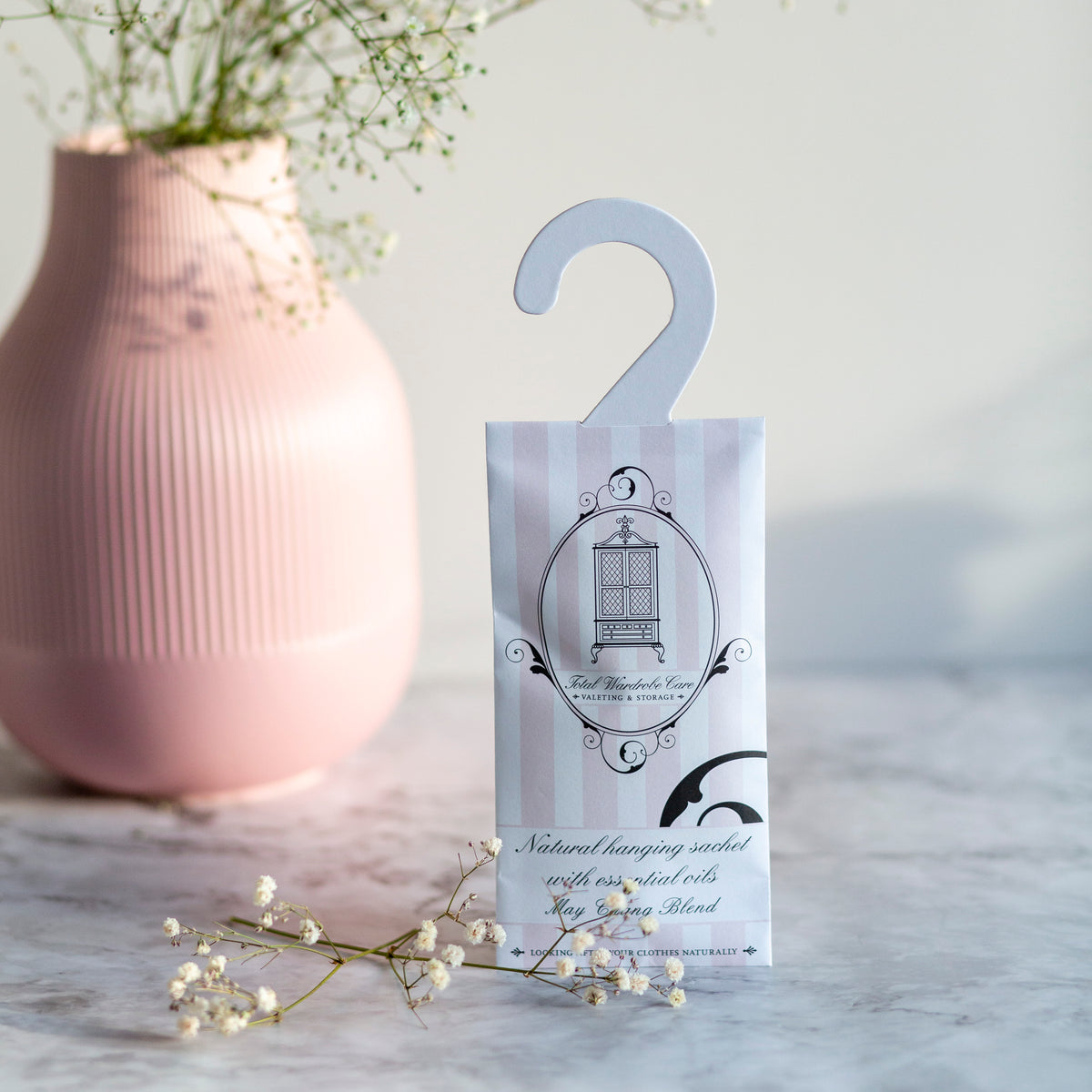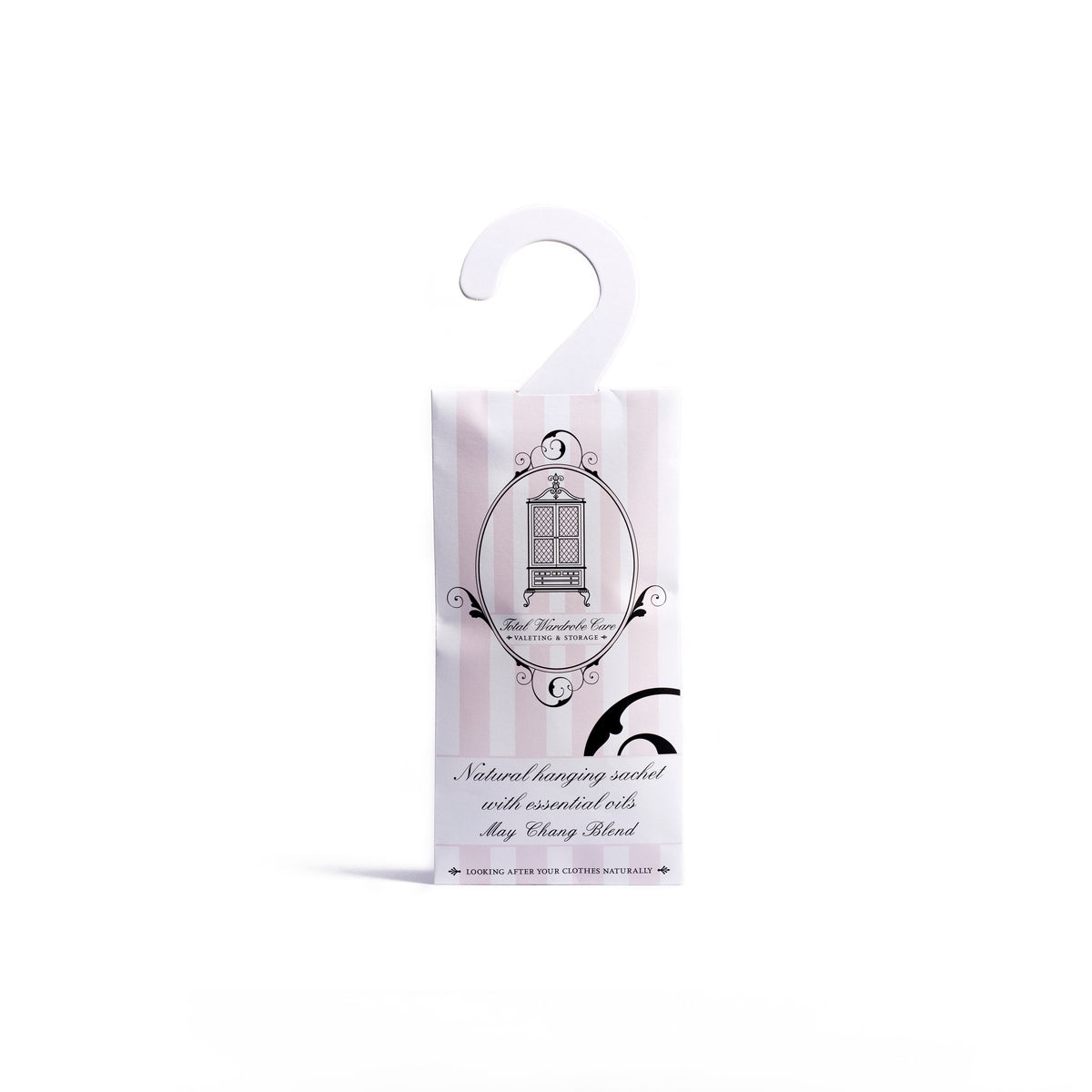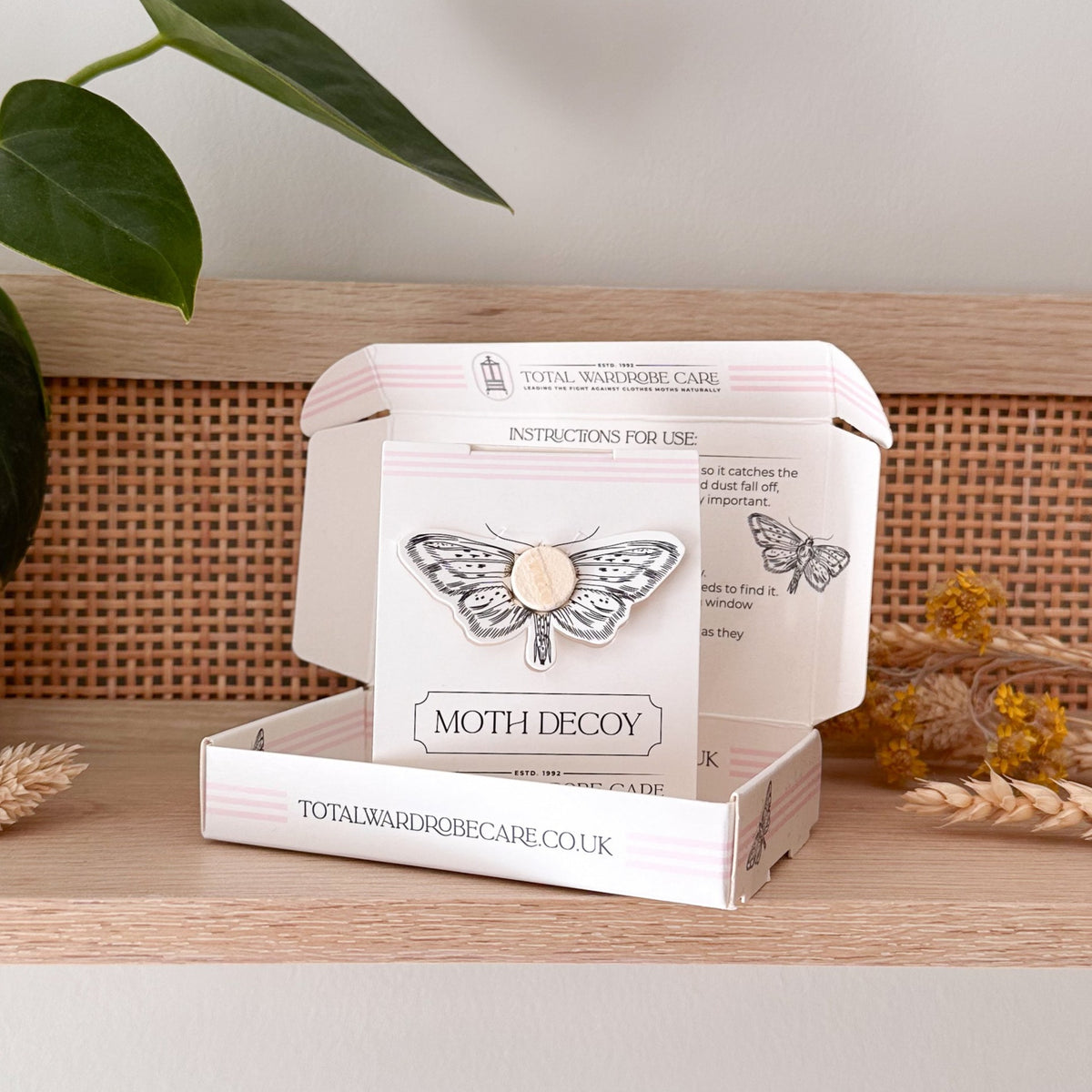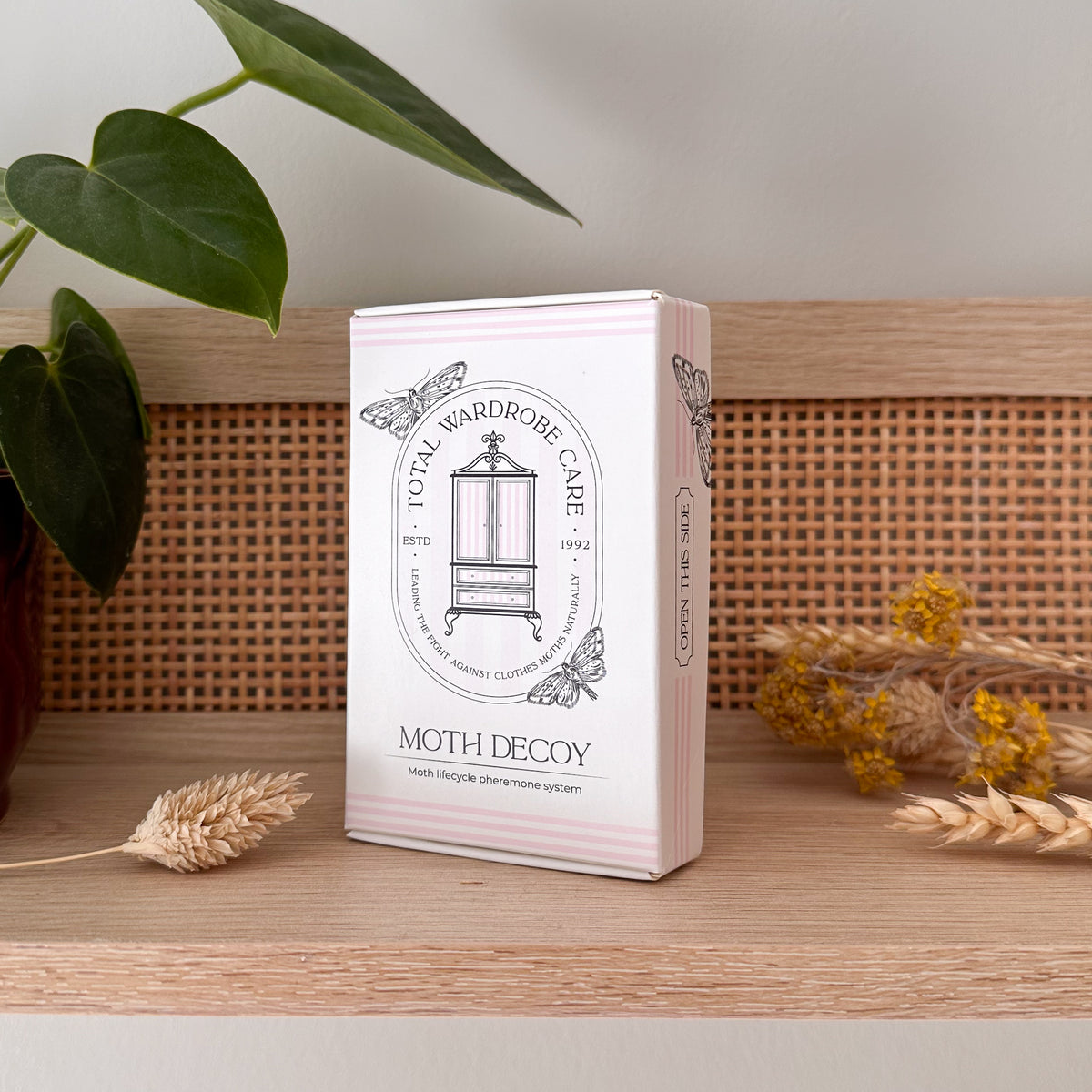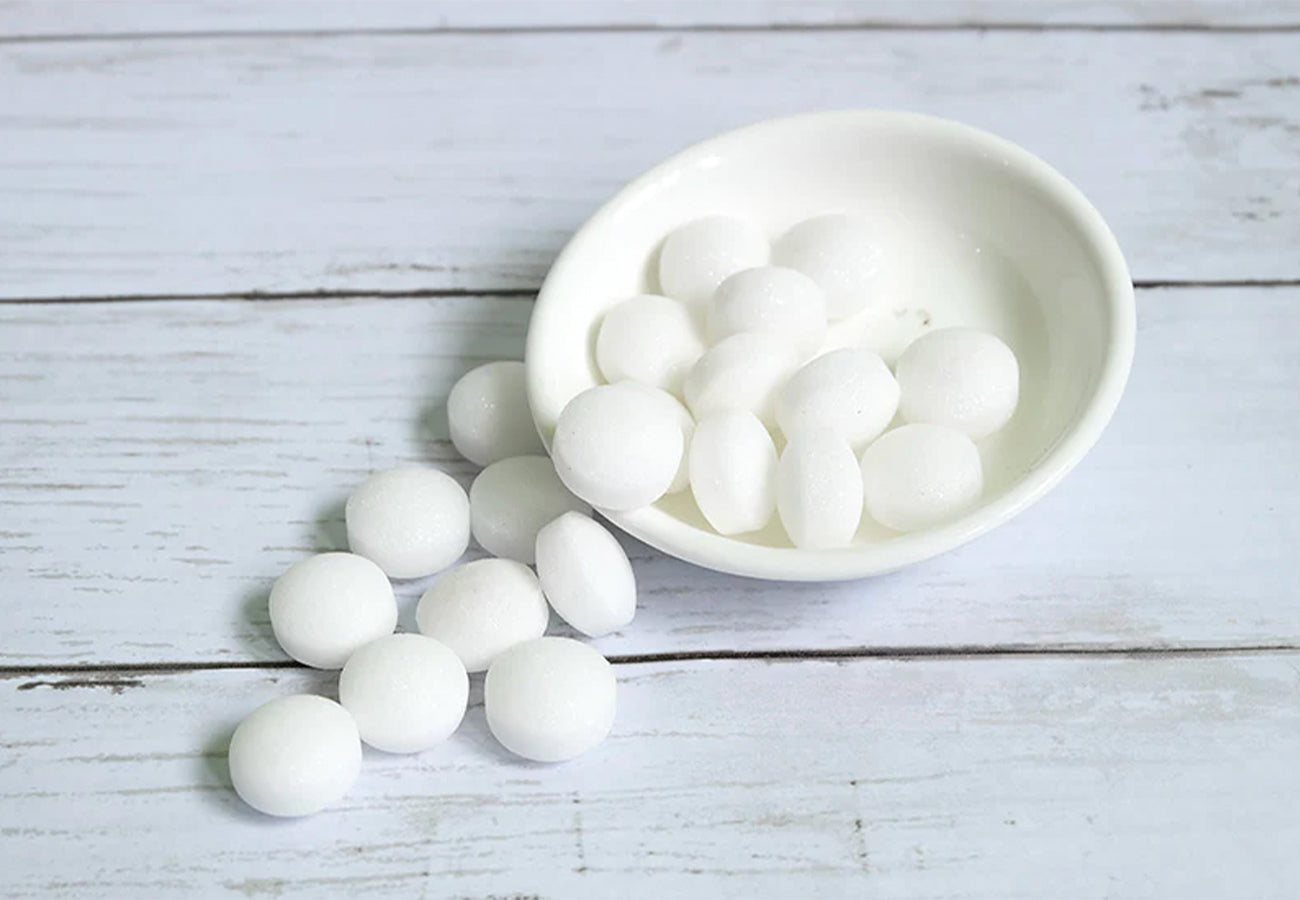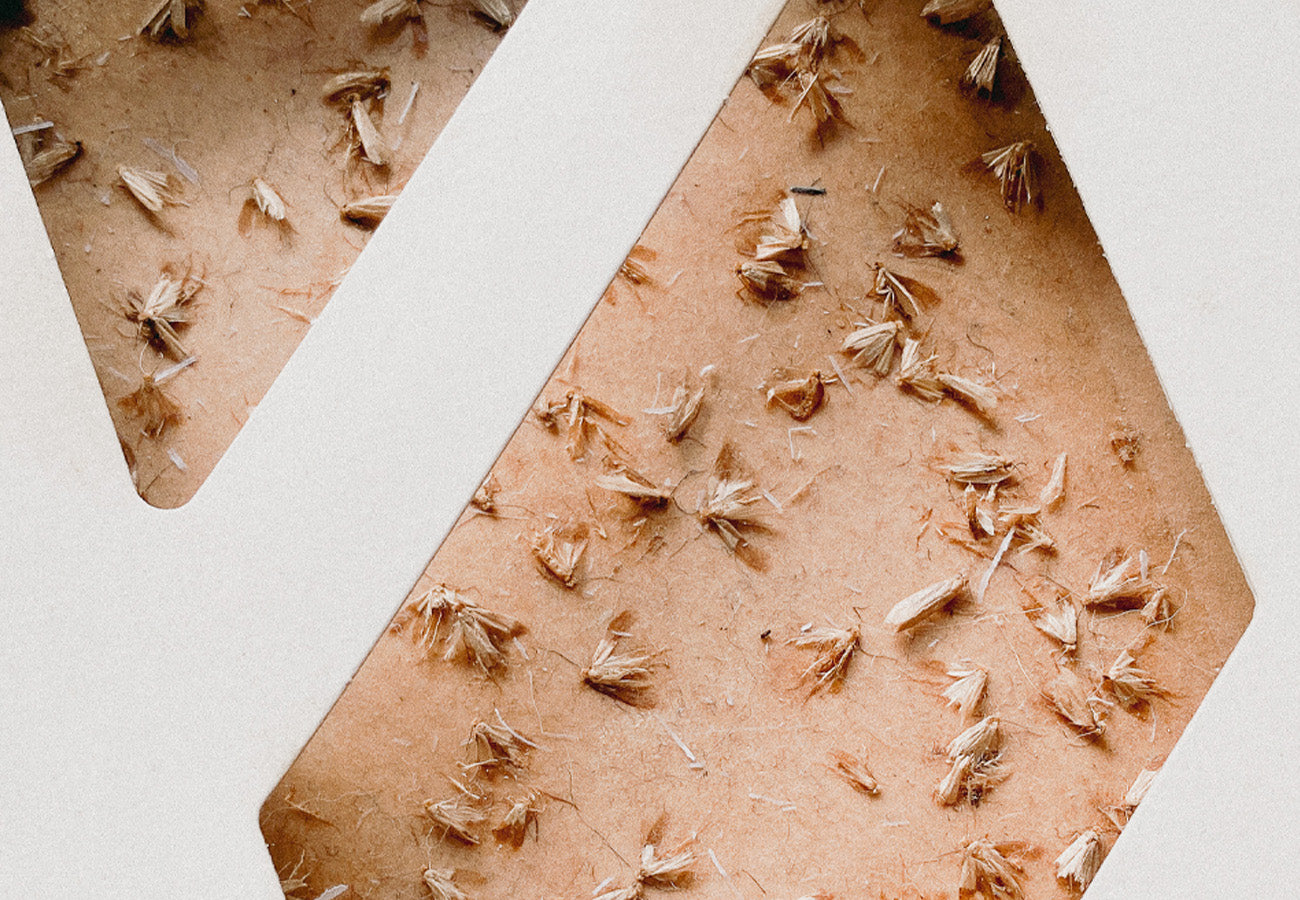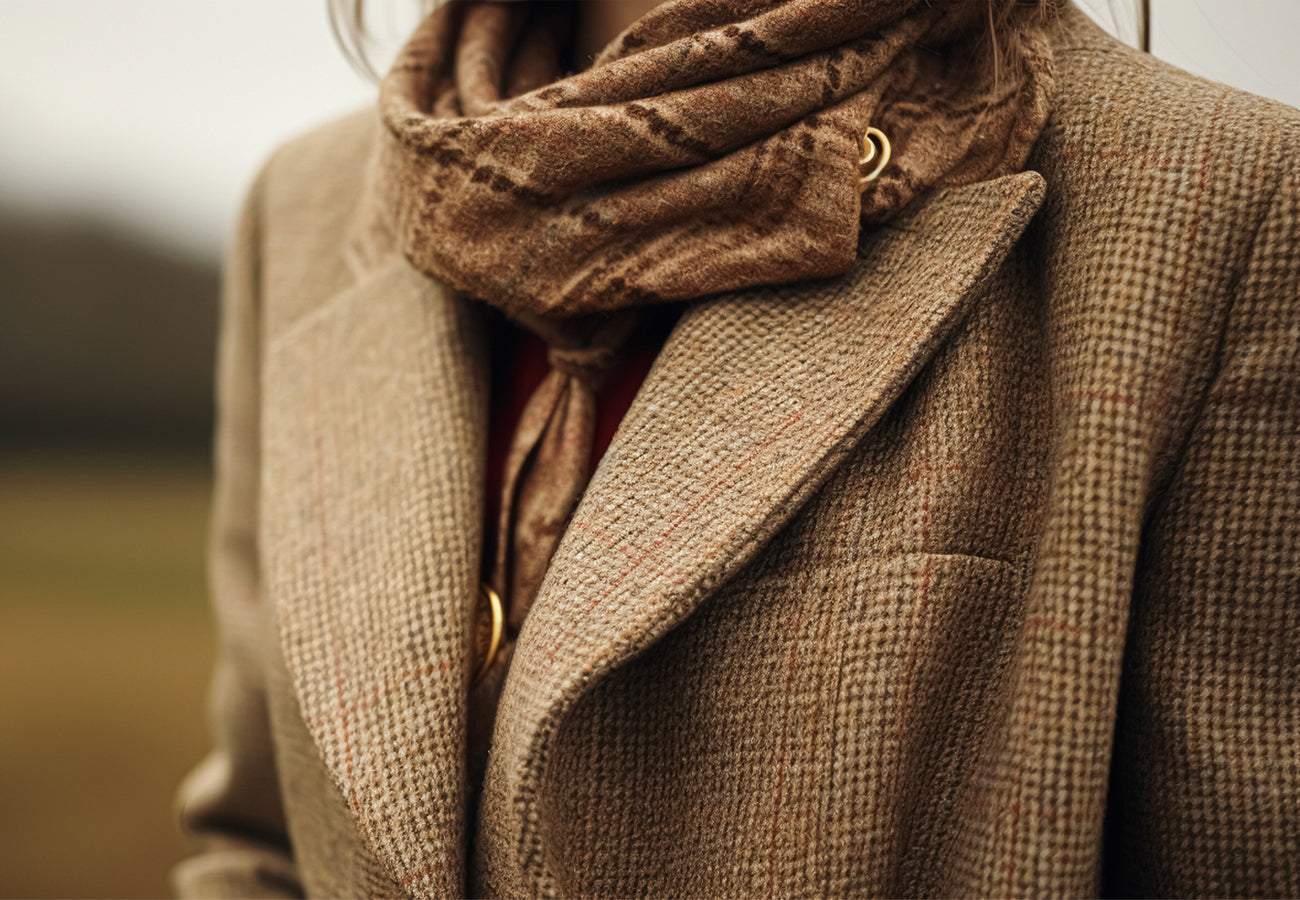With a name like ‘Clothes moth’ you can be forgiven for thinking that these pesky creatures are only a wardrobe issue, but this is simply not true. Clothes moths are not specifically into fashion and can be a problem for your whole house. This is because they are attracted to natural fibres and of course these can be found anywhere around your home not just the wardrobe. So, before you attempt to get rid of clothes moths, a good question to ask yourself is what materials do moths eat?
CLOTHES MOTHS FEED ON NATURAL MATERIALS
It’s the clothes moth larvae that do the damage as they feed on natural materials such as hair and wool, cashmere, silk and cotton. Natural fibres contain a specific protein called keratin which the larvae convert into useful nutrients.Those of us who have battled, and we mean really battled clothes moths, will understand the distress it causes. You clean out your wardrobe, have everything dry cleaned, throw away and replace non-salvageable items at great expense only to find a year later that you have to do the same thing all over again. It is highly likely you have a secret population residing elsewhere in your home waiting to re-infest.
Understanding what clothes moths eat will help you to go through your entire home and find the likely hiding places, bearing in mind there could be more than one. This will help you formulate your clothes moth eradication plan.

WHERE TO CHECK FOR CLOTHES MOTHS
Take one room at a time. Inspect all the items that include natural fibres. Moths lay their eggs in dark protected locations where they are unlikely to be disturbed, so to find the moth larva, you have to think like a moth. Inspect natural wool carpets and rugs. If you can, lift them up and check the underside for signs of webbing. Be sure to check the carpet in areas underneath and at the back of furniture where it is dark such as behind wardrobes and under beds. This may require some heavy furniture moving but to do the job justice you must be thorough. Bear in mind that it’s not just natural antique materials that are problematic. Seagrass for example is a popular modern, natural material for flooring but it can be an absolute mecca for clothes moths!Check curtains, particularly the back of the curtain facing the wall near the floor where it is darkest and also at the top of curtains in between the pleats. By stretching the pleats out so the material flattens you may discover a whole community of moths.

Upholstered furniture with canvas and horsehair provide the perfect hotel for clothes moths and remember it’s not just human hair that moths feed on. Think about your pets. Check cat and dog beds for signs of damage and consider investing in machine washable bedding. I once visited a house where a sofa, upholstered with horsehair was being used as the dog bed. Needless to say, this was the source of a monumental moth infestation and the sofa had to go!
Any other soft furnishings with natural fibres such as feather filled cushions or pillows should be checked.

Vintage toys and teddies also provide an excellent home for moths as they are less likely to be played with, they are made of natural fibres and will have multiple generations of toddler drool over them. We’ve not mentioned this yet, but clothes moth larvae don’t drink, getting the moisture they need instead from what they are eating. That is why in the wardrobe, you are likely to find moth holes around areas on the clothes that get sweaty, under arms are a prime example.
Finally, moving back to the wardrobe, all clothing made of natural fibres are going to attract moths. This means items made of cashmere and wool, cotton and silk. Inspect all the clothes for moth damage, paying special attention to the armpits and crotch areas of suits and trousers.
HOW TO GET RID OF CLOTHES MOTHS
Thankfully we have a super range of anti-moth products which will help you get rid of clothes moths and keep your house moth free. Once you have thoroughly cleaned the infested areas in your house with a vacuum, that includes the inside of the wardrobe, use our Chrysanthemum Moth Spray to treat those areas. If you’re using it in the wardrobe, make sure you remove everything first. Once you have inspected, cleaned and replaced your clothes, consider storing out of season items in our breathable, moth proof Storage Bags and use essential oil-based moth deterrents. Anything you need can be found at our Shop page.
Place our Moth Box in each room or in each infested room if you are confident you have pinpointed the source of your infestation. These trap the male moths and take them out of the mating cycle. You can also use them as an indicator of the seriousness of your infestation. The pheromone lasts for 12 weeks so we sell handy Refills for year-round use. Don’t be tempted to put them in your wardrobes, you don’t want to attract moths from other places in your home into your wardrobe.
For the belt and braces approach, excuse the pun, use our Moth Decoy. This ingenious product uses pheromones to confuse the mating cycle of the clothes moth. It is designed to be used all year round throughout your home. Again, the pheromone lasts for 12 weeks and you can sign up to our handy Subscription Service which takes the worry out of remembering to replace the product. Remember it’s the long-term approach which is the most effective and we are here to help.

NEED HELP?
Managing clothes moths is entirely feasible with the right tools and techniques but if you would like further advice and support, have a look at our Blog Pages or Contact Us.

